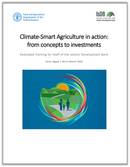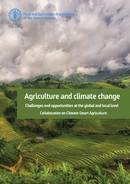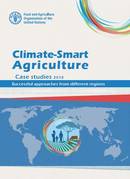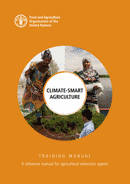Technical reports
The main objective of this report is to review the monitoring and evaluation (M&E) frameworks, tools and guidance documents that are available for Climate-Smart Agriculture (CSA), and in particular for objective (“pillar”) two on adaptation and resilience. The report is a literature review and does not propose a new methodology. It is not an exhaustive list, but summarises the main M&E frameworks.
This training booklet contains core information from the training, including but not limited to: learning objectives, learning materials, and key CSA Sourcebook Chapters. The training booklet also provides useful links to additional learning resources, as well as key FAO publications for future reference.
This report is intended to provide an overview of the activities implemented by the project GCP/GLO/534/ITA “International Alliance on Climate-Smart Agriculture” - funded by the Ministry of Environment, Land and Sea of Italy and implemented by the Food and Agriculture Organization of the United Nations - which supported the creation and implementation of the Global Alliance for Climate-Smart Agriculture and its role in advancing knowledge learning, sharing, and partnership building around the CSA approach. The various activities and products described in this report show how the project has helped on filling knowledge and implementation gaps, developing assessments and tools for promotion and implementation of CSA actions.
This manual is intended for agricultural extension agents and others interested in developing training courses on climate-smart agriculture. The manual intends to answer the following questions:
What is climate change and what are its causes? How will climate change affect agriculture? What can be done to support agricultural producers, both male and female, to adjust to new conditions? What are practical solutions that agricultural producers and others can put into practice? What types of changes will other stakeholders need to make in order to introduce climate-smart agriculture? How does a trainer structure a participatory capacity-development process? How can climate change can be effectively communicated to food producers?





